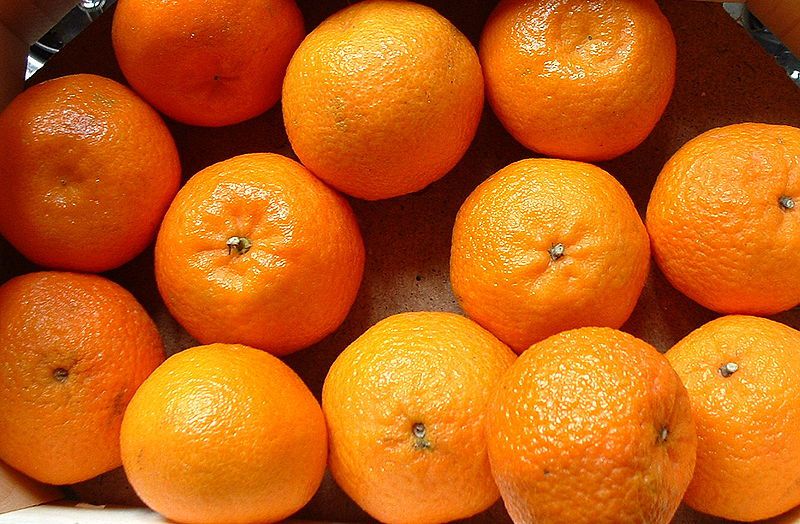-
 Percutaneous
Percutaneous
-
 Chyme
Chyme
-
 Uric acid
Uric acid
-
 Oocyte
Oocyte
-
 Gait
Gait
-
 Mouse
Mouse
-
 London plane tree
London plane tree
-
 Laminin
Laminin
-
 Polypeptide
Polypeptide
-
 Spermaceti
Spermaceti
-
 Local group
Local group
-
 Public domain software
Public domain software
-
 Cementite
Cementite
-
 Mars Reconnaissance Orbiter
Mars Reconnaissance Orbiter
-
 Albinism
Albinism
-
 Flood plain
Flood plain
-
 Blob
Blob
-
 Glycerone phosphate
Glycerone phosphate
-
 Gondwana
Gondwana
-
 Hydrogen reaction engine
Hydrogen reaction engine
-
 Piezometer
Piezometer
-
 ADP
ADP
-
 Fibrillar bone
Fibrillar bone
-
 Varroa
Varroa
-
 Vacuum
Vacuum
-
 Tidal Gate
Tidal Gate
-
 Oligonucleotide
Oligonucleotide
-
 Geode
Geode
-
 Horsepower
Horsepower
-
 Electronic purse
Electronic purse
Clementine
The clementine, often confused with the mandarin, is a winter fruit.
Clementine season
Starting in early November, the clementine can be found on supermarket shelves and in markets in France. Its juicy and sweet flesh is often particularly fragrant. Low in calories, it can boast being a staple in the autumn and winter seasons. Round and firm, its segments, which are covered by a fine membrane without white filaments, are easy to peel. Its taste is somewhere between sweet and tangy.
Nutritional value of clementines
An ideal addition to a healthy and balanced diet, clementines can be eaten for breakfast, for dessert or as a snack. With 40 kilocalories per 100 grammes, clementines are ideal for a healthy and balanced diet. They are also rich in vitamin C, many minerals and trace elements. Even the most fragile people can eat clementines, as their flesh is situable for all metabolisms. They also strengthen the blood vessels.
Clementine varieties
Essentially grown in Spain and Japan, the clementines eaten in France come from Corsica. Specialists still consider the origins of the clementine to be a mystery. Some believe that clementines originally came from Algeria. Clementines are said have been discovered by Clement Rodier between 1900 and 1902, in the region of Oran, hence the name "clementine". Others believe that the fruit comes from China. The result of a cross between the mandarin and the bigarade (bitter orange), the four most well-known varieties are Corsican clementines, the Spanish Oroval and Hermandina varieties, and the Moroccan Caffin and Carte Noire varieties.
Choosing clementines
Often confused with mandarins, which are a little bigger, clementines are orange-coloured and slightly green at the ends. This colour also serves as proof that the fruit has not been ripened in a cold room. Clementine-lovers should rest assured that the green colour does not prevent the clementine from being ripe, sweet and tasty. On sale from mid-October through mid-January, the colour of clementines develops into a reddish-orange. Look for fruit with leaves attached, because this proves that the fruit is fresh.
Cooking and storing clementines
Outside desserts, clementines can be matched with salads or used to make sauces, marmalade or sorbet. After purchase, you may keep clementines for several days at room temperature. For longer storage periods (1 to 2 weeks), it is best to place them in the crisper in the refrigerator. In any case, clementines should not be frozen.
 Clementines are fruit full of vitamin C. © Wikimedia Commons
Clementines are fruit full of vitamin C. © Wikimedia Commons
Latest
Fill out my online form.



